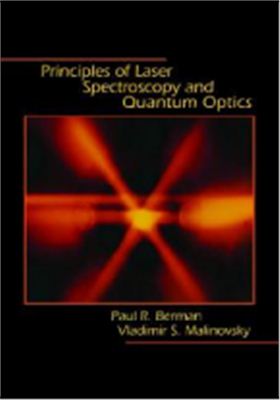Princeton University Press, 2011, 519 pages
Principles of Laser Spectroscopy and Quantum Optics is an essential textbook for graduate students studying the interaction of optical fields with atoms. It also serves as an ideal reference text for researchers working in the fields of laser spectroscopy and quantum optics.
The book provides a rigorous introduction to the prototypical problems of radiation fields interacting with two- and three-level atomic systems. It examines the interaction of radiation with both atomic vapors and condensed matter systems, the density matrix and the Bloch vector, and applications involving linear absorption and saturation spectroscopy. Other topics include hole buing, dark states, slow light, and coherent transient spectroscopy, as well as atom optics and atom interferometry. In the second half of the text, the authors consider applications in which the radiation field is quantized. Topics include spontaneous decay, optical pumping, sub-Doppler laser cooling, the Heisenberg equations of motion for atomic and field operators, and light scattering by atoms in both weak and strong exteal fields. The concluding chapter offers methods for creating entangled and spin-squeezed states of matter.
Principles of Laser Spectroscopy and Quantum Optics is an essential textbook for graduate students studying the interaction of optical fields with atoms. It also serves as an ideal reference text for researchers working in the fields of laser spectroscopy and quantum optics.
The book provides a rigorous introduction to the prototypical problems of radiation fields interacting with two- and three-level atomic systems. It examines the interaction of radiation with both atomic vapors and condensed matter systems, the density matrix and the Bloch vector, and applications involving linear absorption and saturation spectroscopy. Other topics include hole buing, dark states, slow light, and coherent transient spectroscopy, as well as atom optics and atom interferometry. In the second half of the text, the authors consider applications in which the radiation field is quantized. Topics include spontaneous decay, optical pumping, sub-Doppler laser cooling, the Heisenberg equations of motion for atomic and field operators, and light scattering by atoms in both weak and strong exteal fields. The concluding chapter offers methods for creating entangled and spin-squeezed states of matter.

